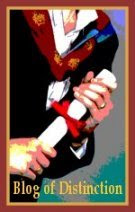The first Saturday of the month is temperate but gray. Ari and I drive into town, first to the local farmers’ market and then my college campus for a woodland walk. We’re already known at both places. I suppose that Greg and I stand out a bit in this community, where the median age is well over forty and our few contemporaries already have multiple children. Ari stands out too, but more so because she is a real attention hound. At the market, she mugs for the farmers, spinning on the length of her leash and cocking her head as they coo over her eyes and soft fur. One farmer, who seems particularly taken with the pup, offers to sit with her while I finish my marketing. For a moment I worry we will be inconveniencing her. However, her expression tells me this is as much favor to her as it is to me.
When I return a few minutes later, I find Ari sampling the farmer’s wares. A masticated carrot and radish lie in pieces about the farmer’s lawn chair, and a very contented puppy rests nearby, an early snowpea clutched between her paws.
“She likes them,” says the farmer proudly, who then looks at the half-chewed vegetable smorgasbord strewn about. “The peas, I mean.”
“She has good taste. They’re my favorite, too.”
This compliment earns us a complementary bag of peas for the road, which the pup and I share as soon as we return to the car. The pods are small and slender—the perfect size for both human and dog mouths. I dole them out for us as we drive up the hill towards campus—one for her, one for me. Ari grows impatient with this system, gobbling up her share quickly and trying to bury her snout in the bag. I don’t know what these taste like to her, but to me they are pure summer: verdant, sweet, and light incarnate. Our weather may be lagging behind, but the vegetables know what’s what.
Once we arrive at school, I stuff the remaining peapods in my pocket and park at a gravel lot near the athletic fields and away from any traffic. Leash-free, Ari bounds from the car and cavorts across the soccer field, spinning figure-eights and other loose geometry on the shaggy field. She stops every few minutes to make sure I’m watching—partly for security, mostly because she wants an audience. She knows I am more than happy to oblige. After making eye contact, she intensifies her routine for both our amusement.
The sky hangs low and thick today, acquiescing only to the occasional rush of sea air from the nearby coast. This cloud-cover makes the light flat, compressing hues and contrasts until they become nearly indistinguishable. The pup couldn’t care less, and she continues her leaping and spinning around the field. But it does mean she’s late to notice a swallow-like bird—the same color as our leaden sky—swoop down out of a large spruce tree to join in the fun. Fearlessly, the bird dives down within striking distance of Ari, then pulls up just out of reach. When Ari stops, puzzled, the bird circles back, completing first one, and then another flyby just above the pup’s head. Ari’s surprise soon turns into eagerness. Is this a game?, she seems to ask.
Deciding that the next few minutes will be more fun if the answer is yes, she rises on her hind legs and paws at the air. The bird drops down just out of reach, then quickly rises in the air. As it does, it looks back at the pup, who is trying unsuccessfully to levitate. If birds could laugh, I’d swear this one was snickering. Forget about the timidity we assign to much of the avian world—this is one brazen little bird.
Later, we identify our new friend as a young female purple martin (Progne subis), just back from a winter in the Amazon River Basin and ready to start a family of her own. The largest of all swallows, the purple martin is the Blue Angel of the bird world, swooping its way through unbelievable stunts for food and water. In fact, the martin does all of its eating and drinking in flight. Not surprisingly, it has earned the reputation of being one of the most acrobatic of all swallows—and the most playful. Martins seem to find particular pleasure in the sheer exuberance of aerial acrobatics and puckish behavior. But they’re far from unique in that area. Many species of birds, in fact, seem to exercise and play tricks for no reason other than the sheer enjoyment of it all.
I see this impulse in our martin. She dips again, buzzing just past the upturned snout of the pup. Ari leaps higher; the martin zooms in, then executes a snapping roll. As she does, the pup bucks in the air, kicking out her hind feet like a donkey. The bird keeps its altitude low, cartwheeling through turnabouts and slips, then ascending high into the air, only to drop back down again. Ari tries to do the same from the ground, though she’s no match for the aerial prowess of this flying ace. Still, she gives it her best, staying close to the martin and following her about the field. She wants desperately to catch up, but the martin stays just out of reach.
It seems like only yesterday I was chasing Ari around our kitchen table, preparing for our first walk. Now, however, Ari is old enough to realize what I knew then: namely, it’s no fun to play tag when you’re always it. Her exuberance for the martin begins to fade. When it seems as if the pup has tired of the game entirely, the bird swoops in again—even closer this time—and spins mad, low-lying circles around the field, chattering back at the pup as she does. The increased boldness of the bird incites Ari, and she begins her chase again. Eventually though, the pup looks frustrated. She’s being taunted—and she knows it. This martin isn’t about to let her catch up, let alone get the upper hand. Ari trots back to me and sits on her haunches. Game over, she seems to insist. The martin gives another few fly-bys, just in case. But the pup is firm: she’s not having fun anymore, and she doesn’t like being a plaything.
Friday, June 1, 2007
Subscribe to:
Post Comments (Atom)


















0 comments:
Post a Comment